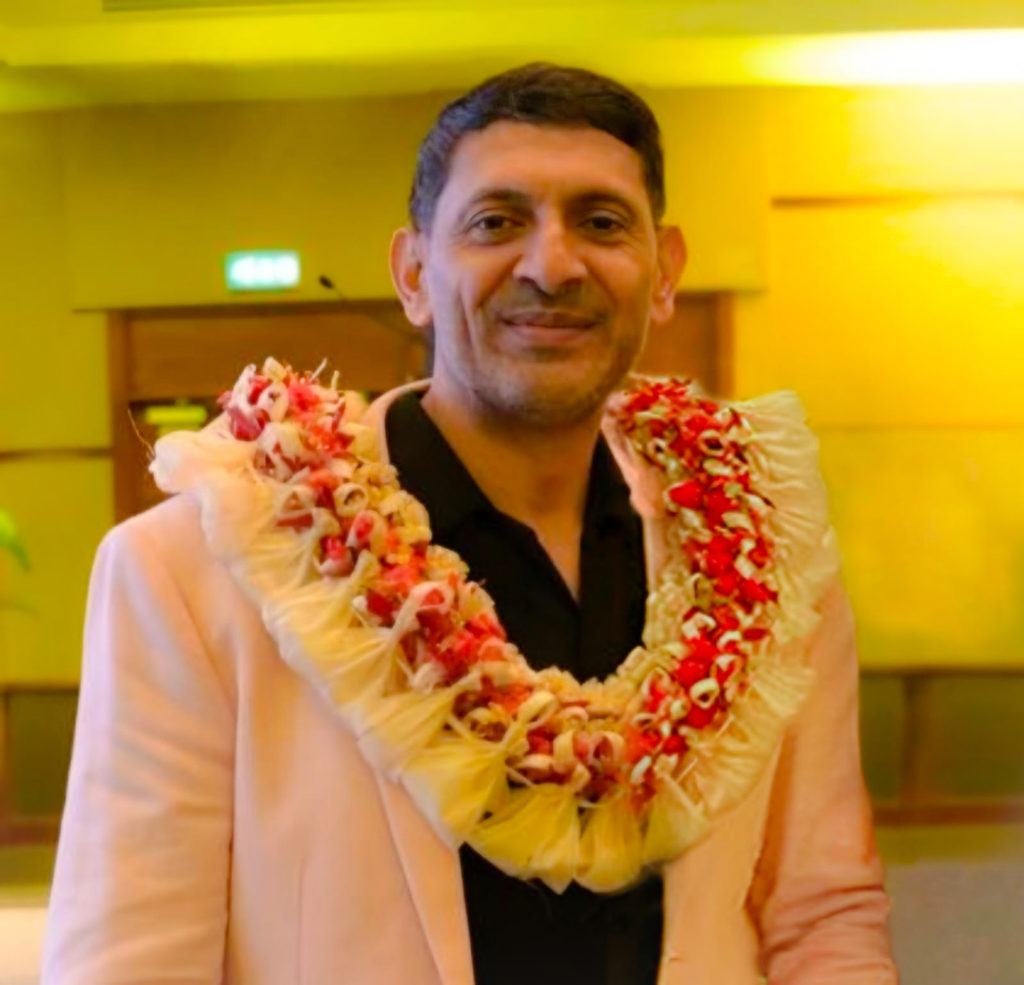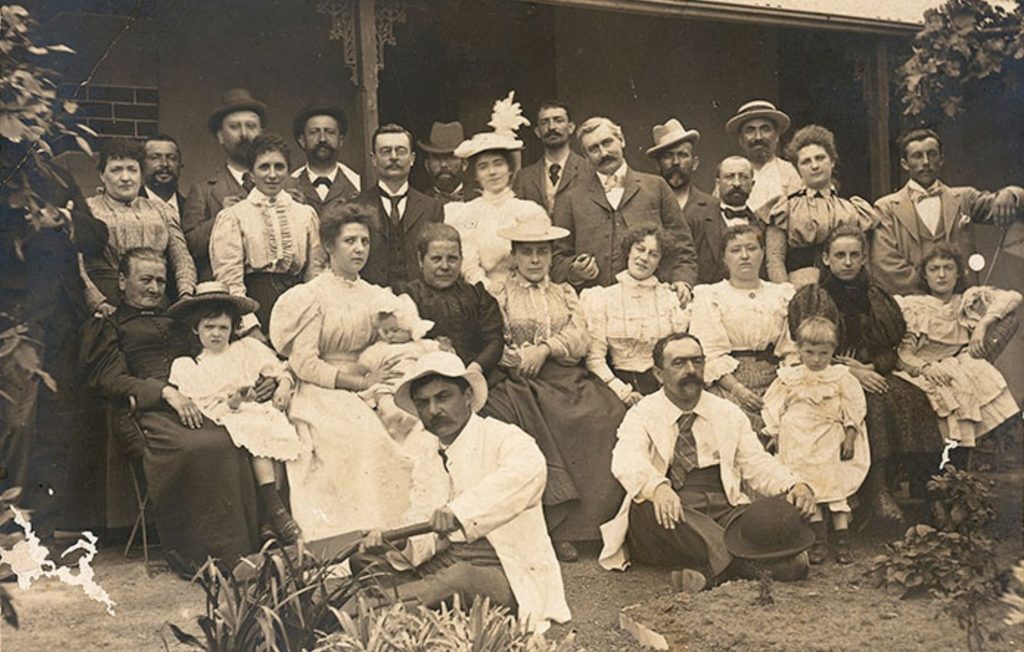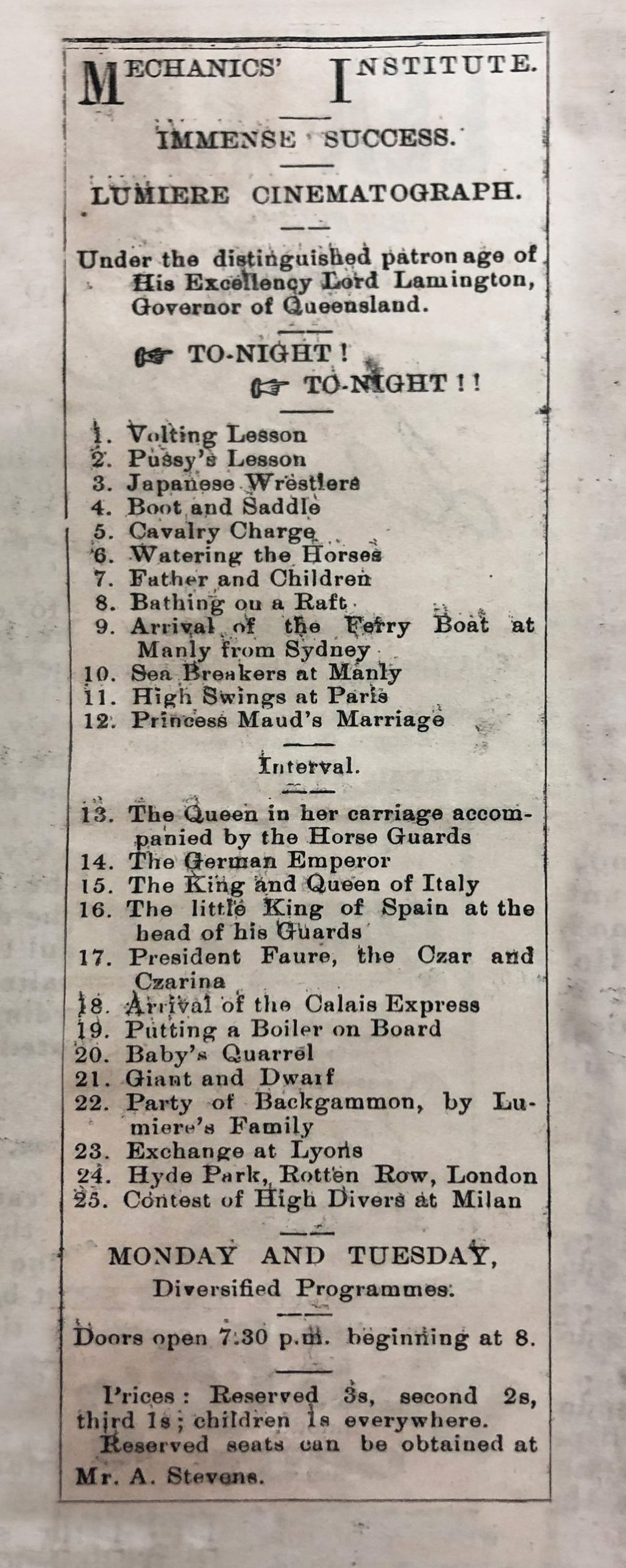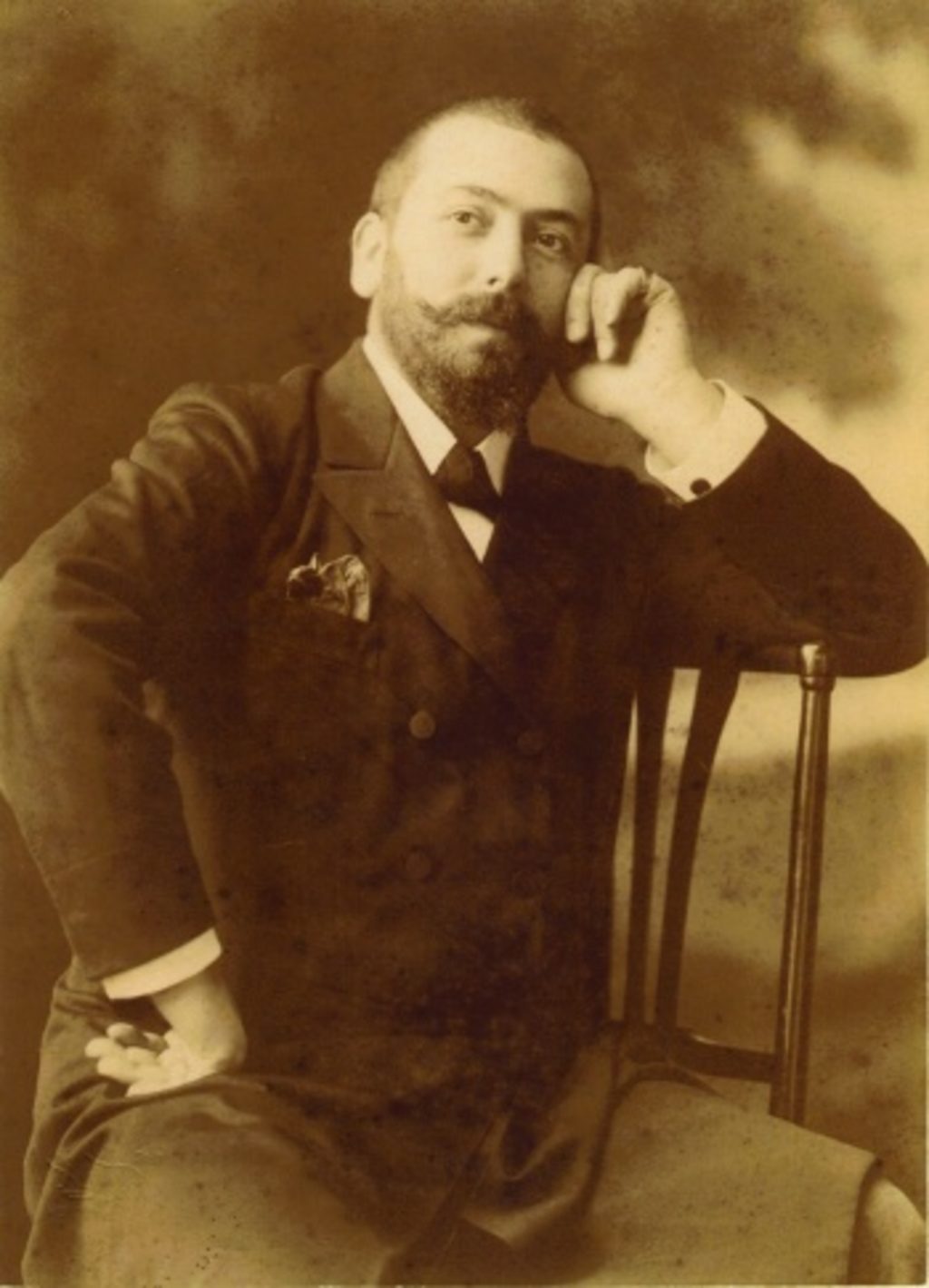On March 22, 1895, the Lumière brothers — Auguste and Louis — held a private screening of moving pictures at a Société d’Encouragement pour l’Industrie Nationale meeting in Paris.
The brothers had invented a new device for recording, developing and projecting moving images called the Cinématographe, which they patented in France on February 13, 1895.
The device improved the Kinetoscope, invented by Thomas Edison and his assistant William Dickson in 1891.
While the Kinetoscope was a “peepshow” device that could show a motion picture to one individual at a time, the Cinématographe allowed a motion picture to be projected onto a screen for multiple viewers. The brothers shot their first film, La Sortie des Usines Lumière à Lyon (Workers Leaving the Lumière Factory in Lyon), in March 1895 using their new apparatus.
The 45-second film shot outside their photographic goods factory in Lyon showed workers leaving at the end of the day and was shown at the Paris event.
On December 28, 1895, the brothers held the world’s first public and commercial demonstration of the Cinématographe at the Le Salon Indien du Grand Café, a room in the basement of the Grand Café, on the Boulevard des Capucines, Paris.
The twenty-minute program featured 10 films of between 38 and 46 seconds, including Workers Leaving the Lumière Factory, Repas de bébé (Baby’s Breakfast, which showed Auguste and his wife feeding their baby) and L’arroseur arrosé (The Sprinkler Sprinkled), possibly the first comedy, showing a boy tricking a gardener into being soaked with water.
As an aside, one of the individuals in the audience that day was Georges Méliés, a magician and one of the pioneers of cinema, most famous for Le Voyage dans la lune (A Trip to the Moon, 1902).
After this successful exhibition, the brothers opened theatres in New York, London and Brussels.
They also trained opérateurs (cinematographers) to use the Cinématographe.
Many of these individuals travelled to far-off places such as India and China to show motion pictures using the new contraption.
One of these opérateurs, and someone important to the story of cinema in Fiji, was Marius Sestier, a pharmacist from Sauzet, Drome, France.
It may seem odd to employ a pharmacist to disseminate moving pictures globally, but Jean Claude Seguin (1994) explains that while Sestier was fascinated with the Cinématographe, Auguste Lumière was interested in medicine.
It was through this mutual love of moving pictures and medicine that their paths crossed.
The Lumière brothers sent Sestier as a cinematographer to India in 1896 to showcase their short films.
The first screening was held at Watson’s Hotel in Bombay (now Mumbai) on July 7. From India, Sestier travelled to Australia to showcase the Lumiere Cinématographe.
Sestier and wife Marie-Louise arrived in Sydney on September 16 on board the F.M.S Polynésien from Bombay via Colombo. He invited journalists to a private screening on the 18th at the Lyceum Theatre on Pitt St.
On September 28, Sestier gave a public exhibition of the Cinématographe at the Salon Lumière, Australia’s first movie theatre, at 237 Pitt St, a few doors from the Lyceum.
Sestier was surprised to learn that the Cinématographe was not Australia’s first motion picture apparatus. Two other apparatuses were in operation at the time of his arrival, and there were two others within six weeks.
The shows proved to be a hit as described by The Daily Telegraph (October 12, 1896): “The management of the Cinematographe Lumiere must have deeply regretted on Saturday that the improvised theatre in the Pitt-St shop was not 10 times its size. There were about 12 performances during the afternoon and evening, and a packed audience witnessed each while several hundreds of people were gathered on the pavement outside awaiting their turn.”
During the Sestiers’ time in Sydney, they stayed with Eugène Boivin, secretary to the French consul in Sydney, and his family at Glebe. Before Sestier left Australia in May 1879, he sold about four Lumière Cinématographes to Eugène’s son Georges Boivin, another individual important to the story of cinema in Fiji. Although Georges Boivin’s occupation was listed variously as a language teacher, a lecturer on historical events or social issues, a poet, a shipping agent and a warehouseman, Sally Jackson of the National Film and Sound Archive of Australia says it was “his work in the global dissemination of the cinema which gives him an international significance.”
In April 1897, Auguste Plane, an exhibitor, arrived in Noumea aboard the French mail steamer Ville de la Ciotat to hold the French colony’s first picture shows.
The exhibition was held on April 9 at the Hôtel de Ville of Noumea. Accompanying Plane in New Caledonia and listed as L’agent général in advertisements from April 7, 1897, was Georges Boivin.
In March 1898, Boivin returned to New Caledonia for a six-week tour with his two new business partners, G. Mitchell and Henry Schultz.
It is possible that Mitchell was an electrician or a mechanic, but Schultz was an importer/exporter based in Fiji and Samoa.
From Noumea, the trio left for Fiji for an exhibition of the Lumière Cinématographe.
The Lumière Cinématographe Exhibition arrived at Suva on the steamer Birkagate on Sunday, May 8, 1898, for a season of picture shows under Henry Schultz’s management. Schultz claimed the Lumière Cinématographe “[was] the best show of its kind that [had] been on view in Australia, and [was] prepared to mobilise the opinion of a Suva audience as to the excellence of the entertainment which he [proposed] to regale them with [that] evening and nightly for the remainder of the week” (The Fiji Times, Wednesday, May 11).
The company’s year-long tour of Australia included exhibitions at the Princess Theatre Melbourne, the Criterion in Sydney, the Royal Theatre in Adelaide, and Brisbane. Schultz revealed that the Australian tour was an overwhelming success, receiving special patronage from Lord Thomas Brassey, Victoria’s governor, and Lord Lamington, the Queensland governor. But, according to Schultz, the Lumière Cinématographe had created a sensation not just in Australia but worldwide during the last two to three years because of its novelty.
The first showing of the Lumière Cinématographe Exhibition at Suva was held in a crowded house on the evening of Wednesday, May 11, at the Mechanics’ Institute. Among the pictures shown was the Melbourne Cup series. The Fiji Times issue of Saturday, May 14, gave the following report of the event: “This modern invention proved a thorough success, and those present witnessed a real treat. The machine was properly handled by experienced men, and not a single hitch eventuated during the evening. The pictures shown were excellent and highly interesting from start to finish, many having to be repeated so great was the applause.”
The exhibition ran for several weeks, and new pictures were added daily. During the tour, some pictures included the Diamond Jubilee Pictures, the Coronation of the Czar, animated pictures of the Queen and the Prince of Wales, the Emperor of Germany, and other potentates and a short called The High Divers. A single night’s program included up to 40 pictures, and Mr Lyons’s piano performance accompanied them.
The Lumière Cinématographe Exhibition picture shows drew full houses at Suva each night. The Fiji Times (Saturday, May 14) said that never before had the folks of Suva “had the pleasure of visiting such an enjoyable show in their midst,” adding that those who had never heard about the Cinématographe “were more than pleased”. Many Suva citizens could not get enough of this new technological and visual wonder and returned for a second and even a third viewing. The Fiji Times suggested that those who had not seen “this first-class attraction” were “missing more than they think”. It also said that those wishing to reserve seats could do so at the establishment of A. Stevens.
Because of its popularity, the season at Suva had to be extended. The attendance was so high that many people were turned away from the venue each night. The Mechanics’ Institute was packed to the rafters at every screening, and those who could not find a seat had to stand to view the pictures. The Fiji Times issue of Wednesday, May 18, reported that the picture shows were particularly popular with the “coloured public.”
The season at Suva closed on Saturday, May 21, with a 3 o’clock matinee for children and an evening performance. The exhibition then moved to Navua, where there were screenings at the Company’s Mill on Thursday, May 26 and Friday, May 27. Shows at Nausori followed this on Monday and Tuesday, the 30th and 31st of May. The picture company then proceeded to Levuka for a short season starting Thursday, June 7.
There is some dispute over the claim that this was the first time motion pictures were exhibited in Fiji. While some authorities suggest it was, Jackson says it was “not the first time a cinematographe was screened in Fiji”. In my book The Fiji Times at 150: Imagining the Fijian Nation (Or, A Scrapbook of Fiji’s History), I suggest the following:
“But this was not the first exhibition of moving pictures in the colony; there had been itinerant showmen with little to no knowledge of the “Cinématographe Apparatus,” who toured the islands putting on picture shows. But the Lumière Cinématographe Exhibition was the first professional outfit to visit the colony, having the services of two individuals trained in the use of the equipment.”
With the benefit of more research, I will have to revise this position. Firstly, there is no mention in The Fiji Times of a previous tour of moving pictures. I had considered this when writing The Fiji Times history book, but concluded that perhaps the exhibitions weren’t noteworthy enough for mention. Second, we must consider that most exhibitors took the Sydney-Fiji or Sydney-New Caledonia-Fiji route. If motion pictures arrived in Sydney for the first time with Sestier, it is unlikely an exhibitor would skip a market as big as Sydney and come straight to Fiji before him. Hence, it seems likely the Lumière Cinématographe Exhibition was probably the first time Fijians witnessed picture shows.
n DR ANURAG SUBRAMANI is an academic and writer. His new book, The Fiji Times at 150, is a history of the newspaper from 1869 to 2019 and a social history of Fiji. It is available at the Fiji Times Pte Ltd office, the USP Bookshop and all Prouds outlets in Fiji. The views expressed in this article are his and not of this newspaper.

Georges Boivin is seated on the ground with a cricket bat. Picture: australiancinema.info

An advertisement from the Fiji Times, Saturday, May 14, 1898. Picture: FILE



